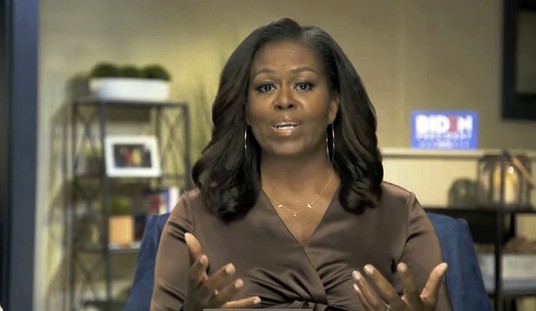Well, that answers the question about what to do with all those Soviet era statues of Lenin that lie in the junkyard unwanted: send them to Vegas, where they can be surrounded by all the kitsch. Stand around long enough and you’ll see Russian visitors pose for photos in front of him. Old V.I. stands ready to greet you if you enter to eat or drink at the Red Square at Mandalay Bay. (Click on each photo to enlarge.)
Those thankless ex-Soviets — who not only tore him down from wherever he once stood, but took off his head for good measure.
Having gone to last week’s American Freedom Alliance conference on the media at Pepperdine University, my wife and I decided to take a few days R and R in Vegas — where I believe every American ought to go to at least once. There are a couple of good reasons to go. One is to view the gorgeous ceiling at the Bellagio hotel, as well as its art museum (extra cost, of course) and the sculptures in the lobby garden display.
The other is to see one of the productions by Cirque du Soleil, and if you are a Beatles fan, the much heralded “Love,” which is now apparently their most popular production. Not only is it thrilling and imaginative, but you have never heard the Beatles in such incredible pristine pure sound — even if you have the most professional and expensive sound system at home.
Being a historian who has written a few times on historical museum exhibits, I also went to the Smithsonian affiliate in Vegas, the Atomic Testing Museum.
Despite well conceived exhibits, I left it more than a bit disappointed. The emphasis is on the atomic testing that, in the 1950s, one could evidently see from the site of the old Fremont Hotel in between gambling. Hence the display of the manikin in their fallout shelter, appropriately clothed for the occasion.
The film in the museum’s main theater contains interviews with some of the old timers who spent most of their lives on the test site, supervising the blast. They are proud of their work, and the role they played in helping the United States achieve nuclear capability and hence providing the military strength that led to the end of the Cold War. But their interviews skirt the issue of whether the known radiation sickness and illness of the many military personnel who witnessed blasts and then went on to the blast site was both morally wrong and unnecessary. The voiceovers argue that the government did not know at the time that they were subjecting troops and other personnel to danger, and that despite the personal danger, the testing was necessary. The problem is that in fact it was well known at the time by scientists that exposure to such radiation was extremely dangerous, and those subjected to it were essentially lied to.
Secondly, some of the text accompanying the exhibits is plainly incorrect. At one point, the museum-goer is informed that Americans spying for the Soviets did so in order to receive the high payments given them for their espionage at Los Alamos and elsewhere. In fact, the scientists who gave secrets to the Soviets, like Ted Hall and Klaus Fuchs, and the spy rings like that set up by Julius Rosenberg, engaged in espionage for ideological reasons. They wanted Stalin to have the bomb, which they believed the Russians were entitled to and prevented from having by U.S. policy. They were essentially Soviet and not American patriots. For a museum meant to educate those who visit it, such an error is inexcusable.
One final tip should you consider going to Vegas. Don’t go now or in the summer — wait for cooler weather. It is so hot it is almost impossible to go outside for more than a few minutes. And if you do go, do not walk more than one or two blocks! Trust me on this one. Save your walking for the night.















Join the conversation as a VIP Member